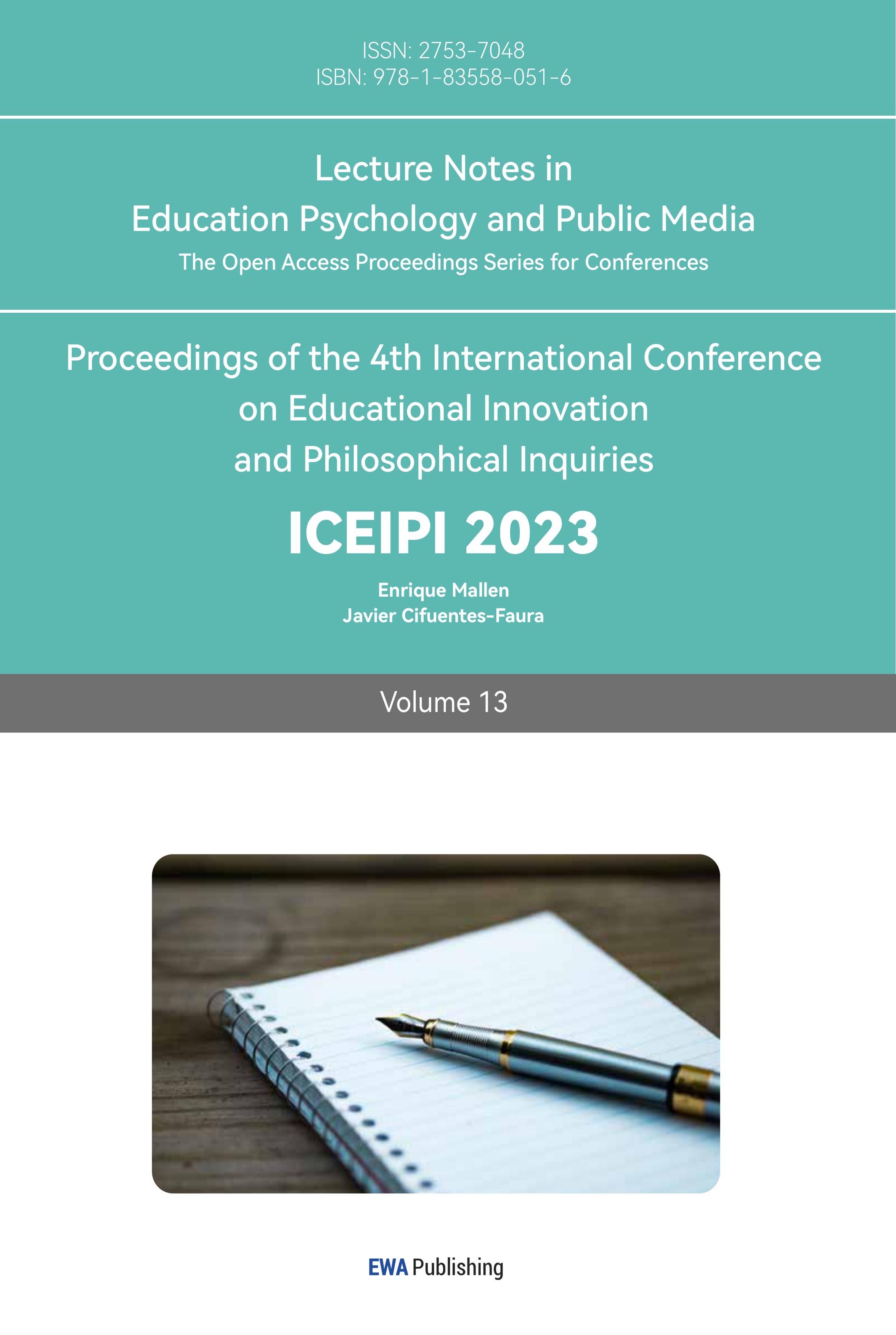References
[1]. ESHRE Capri Workshop Group. (2005). Fertility and ageing. Human reproduction update, 11(3), 261-276. https://doi.org/006.<>/humupd/dmi<>
[2]. Harman, D. (2001). Aging: overview. Annals of the New York Academy of Sciences, 928(1), 1-21.
[3]. Weil, D. N. (2006). Population aging. DOI 10.3386/w12147.
[4]. Espenshade, T. J. (1994). Can immigration slow US population aging? Journal of Policy Analysis and Management, 13(4), 759-768. https://doi.org/10.2307/3325496
[5]. Fang, E. F., Scheibye-Knudsen, M., Jahn, H. J., Li, J., Ling, L., Guo, H., ... & Ng, T. B. (2015). A research agenda for aging in China in the 21st century. Ageing research reviews, 24, 197-205. https://doi.org/10.1016/j.arr.2015.08.003
[6]. Jiang, Quanbao, Shucai Yang, and Jesús J.Sánchez-Barricarte. “Can China afford rapid aging?.” Springerplus 5 (2016): 1-8.
[7]. Wang Zengwen. (2014). A study on population migration, fertility and aging in a steady state of population. China’s population Resources and Environment, 24 (10), 114-120.
[8]. Harper, S. (2014). Economic and social implications of aging societies. Science, 346(6209), 587-591.
[9]. Abramitzky, R., & Boustan, L. (2017). Immigration in American economic history. Journal of economic literature, 55(4), 1311-1345.
[10]. Turner, A. (2009). Population ageing: what should we worry about? Philosophical Transactions of the Royal Society B: Biological Sciences, 364(1532), 3009-3021.
[11]. Stevenson, B., & Wolfers, J. (2009). The paradox of declining female happiness. American Economic Journal: Economic Policy, 1(2), 190-225.
[12]. Bongaarts, J. (2015, January). Global fertility and population trends. In Seminars in reproductive medicine (Vol. 33, No. 01, pp. 005-010). Thieme Medical Publishers.
[13]. Yang, J., & Coughlin, J. F. (2014). In-vehicle technology for self-driving cars: Advantages and challenges for aging drivers. International Journal of Automotive Technology, 15, 333-340.
Cite this article
Miao,R. (2023). Aging Alleviation Through Increasing Fertility and Migration. Lecture Notes in Education Psychology and Public Media,13,14-19.
Data availability
The datasets used and/or analyzed during the current study will be available from the authors upon reasonable request.
Disclaimer/Publisher's Note
The statements, opinions and data contained in all publications are solely those of the individual author(s) and contributor(s) and not of EWA Publishing and/or the editor(s). EWA Publishing and/or the editor(s) disclaim responsibility for any injury to people or property resulting from any ideas, methods, instructions or products referred to in the content.
About volume
Volume title: Proceedings of the 4th International Conference on Educational Innovation and Philosophical Inquiries
© 2024 by the author(s). Licensee EWA Publishing, Oxford, UK. This article is an open access article distributed under the terms and
conditions of the Creative Commons Attribution (CC BY) license. Authors who
publish this series agree to the following terms:
1. Authors retain copyright and grant the series right of first publication with the work simultaneously licensed under a Creative Commons
Attribution License that allows others to share the work with an acknowledgment of the work's authorship and initial publication in this
series.
2. Authors are able to enter into separate, additional contractual arrangements for the non-exclusive distribution of the series's published
version of the work (e.g., post it to an institutional repository or publish it in a book), with an acknowledgment of its initial
publication in this series.
3. Authors are permitted and encouraged to post their work online (e.g., in institutional repositories or on their website) prior to and
during the submission process, as it can lead to productive exchanges, as well as earlier and greater citation of published work (See
Open access policy for details).
References
[1]. ESHRE Capri Workshop Group. (2005). Fertility and ageing. Human reproduction update, 11(3), 261-276. https://doi.org/006.<>/humupd/dmi<>
[2]. Harman, D. (2001). Aging: overview. Annals of the New York Academy of Sciences, 928(1), 1-21.
[3]. Weil, D. N. (2006). Population aging. DOI 10.3386/w12147.
[4]. Espenshade, T. J. (1994). Can immigration slow US population aging? Journal of Policy Analysis and Management, 13(4), 759-768. https://doi.org/10.2307/3325496
[5]. Fang, E. F., Scheibye-Knudsen, M., Jahn, H. J., Li, J., Ling, L., Guo, H., ... & Ng, T. B. (2015). A research agenda for aging in China in the 21st century. Ageing research reviews, 24, 197-205. https://doi.org/10.1016/j.arr.2015.08.003
[6]. Jiang, Quanbao, Shucai Yang, and Jesús J.Sánchez-Barricarte. “Can China afford rapid aging?.” Springerplus 5 (2016): 1-8.
[7]. Wang Zengwen. (2014). A study on population migration, fertility and aging in a steady state of population. China’s population Resources and Environment, 24 (10), 114-120.
[8]. Harper, S. (2014). Economic and social implications of aging societies. Science, 346(6209), 587-591.
[9]. Abramitzky, R., & Boustan, L. (2017). Immigration in American economic history. Journal of economic literature, 55(4), 1311-1345.
[10]. Turner, A. (2009). Population ageing: what should we worry about? Philosophical Transactions of the Royal Society B: Biological Sciences, 364(1532), 3009-3021.
[11]. Stevenson, B., & Wolfers, J. (2009). The paradox of declining female happiness. American Economic Journal: Economic Policy, 1(2), 190-225.
[12]. Bongaarts, J. (2015, January). Global fertility and population trends. In Seminars in reproductive medicine (Vol. 33, No. 01, pp. 005-010). Thieme Medical Publishers.
[13]. Yang, J., & Coughlin, J. F. (2014). In-vehicle technology for self-driving cars: Advantages and challenges for aging drivers. International Journal of Automotive Technology, 15, 333-340.









